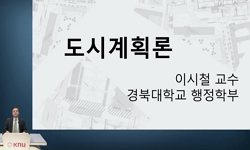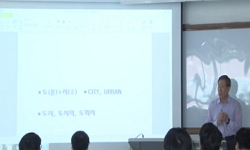이 글은 1970년대 용인의 도시 성장과 그에 따른 공간구조 변화를 살펴본다. 서울 근교의 한적한 농촌 지역이었던 용인이 도시공간으로 전환된 계기는 고속도로 건설이었다. 1968년 경부고속...
http://chineseinput.net/에서 pinyin(병음)방식으로 중국어를 변환할 수 있습니다.
변환된 중국어를 복사하여 사용하시면 됩니다.
- 中文 을 입력하시려면 zhongwen을 입력하시고 space를누르시면됩니다.
- 北京 을 입력하시려면 beijing을 입력하시고 space를 누르시면 됩니다.

1970년대 용인의 도시 성장과 공간구조 변화 = The Urban Growth and the Reorganization of Spatial Structure to the ‘Expressway City’ of Yongin in the 1970s
한글로보기https://www.riss.kr/link?id=A108498070
- 저자
- 발행기관
- 학술지명
- 권호사항
-
발행연도
2023
-
작성언어
-
-
주제어
용인 ; 기흥 ; 도시계획 ; 도시 성장 ; 경부고속도로 ; Yongin ; Giheung ; Urban plan ; Urban Growth ; Gyeongbu Expressway
-
KDC
900
-
등재정보
KCI등재
-
자료형태
학술저널
-
수록면
139-174(36쪽)
- DOI식별코드
- 제공처
- 소장기관
-
0
상세조회 -
0
다운로드
부가정보
국문 초록 (Abstract)
이 글은 1970년대 용인의 도시 성장과 그에 따른 공간구조 변화를 살펴본다. 서울 근교의 한적한 농촌 지역이었던 용인이 도시공간으로 전환된 계기는 고속도로 건설이었다. 1968년 경부고속도로 서울-신갈 구간의 개통 이후 용인 서부 지역인 기흥면은 수원 도시계획구역에 편입되었다. 1974년 도시계획정책이 전환됨에 따라 경부고속도로 동쪽 일대가 수원 도시계획구역에서 제외되었지만, 신갈 지역은 경부고속도로와 42번 국도를 축으로 하는 독자적인 도시계획을 수립할 수 있었다. 용인군은 1975년 마련된 도시계획의 틀을 유지하면서 지역 내 공업이 성장하는 현실에 맞추어 신갈의 도시공간을 정비해 나갔다. 기흥면 남부에서는 고속도로와 신갈저수지를 활용한 관광지 및 주택단지 조성이 이루어졌다. 기흥단지와 한국민속촌의 조성으로 기흥 남부 일대는 서울 근교의 대표적인 관광지로 자리 잡을 수 있었다. 하지만 이 지역은 수원 도시계획구역과 신갈 도시계획구역 어느 쪽에도 포함되지 못했기 때문에 이후 난개발의 대상지가 되기 쉬웠다.
군청 소재지이자 기존에 시가지가 형성되어 있던 용인면 지역은 1971년 영동고속도로의 개통 이후 공업도시로의 전환을 겪었다. 용인군은 도시계획을 통해 영동고속도로 인근 유방리와 고림리 일대에 공업지역을 지정하고 공장들을 이 지역에 입주·이전시키는 한편, 주거지역을 확보하여 공장 노동자들을 위한 택지 조성을 계획했다. 1974년 재정비계획의 수립 이후 용인면 도시계획은 ‘공업기능의 확대와 이를 지원하기 위한 시가지의 정비’라는 구조를 유지했다. 이와 같은 도시 성장으로 용인면은 독자적인 생활권을 구성할 수 있었지만, 기흥 지역을 포괄하는 단일한 도시권역을 형성하지 못했다. 현재 용인시 동부와 서부 사이의 단절과 갈등은 이와 같은 1970년대 도시 성장의 결과물이기도 하다.
다국어 초록 (Multilingual Abstract)
This article examines the urban growth of Yongin in the 1970s and the resulting changes in the spatial structure of the region. Yongin, a quiet rural area near Seoul, was converted into an urban space due to the construction of expressways. After the ...
This article examines the urban growth of Yongin in the 1970s and the resulting changes in the spatial structure of the region. Yongin, a quiet rural area near Seoul, was converted into an urban space due to the construction of expressways. After the opening of the Seoul-Singal section of the Gyeongbu Expressway in 1968, Giheung-myeon(township), the western region of Yongin, was incorporated into the urban planning area of Suwon, which was geographically adjacent to it. Since then, the spatial structure of Giheung-myeon had been planned in connection with the Suwon City Plans. Following the conversion of the urban planning policy of the ROK government in 1974, the eastern part of the Gyeongbu Expressway was excluded from the Suwon urban planning area, however, it was able to establish Singal's own urban planning according to the “Guidelines for Urban Planning for Myeon-class Cities.” Since then, the Singal area had maintained the framework of urban planning designed in 1975 and reorganized urban spaces in line with the reality that industries in the region are growing. In the southern part of Giheung-myeon, tourist and residential areas were created near the expressway and Singal Reservoir. With the construction of the Giheung Housings and the Korean Folk Village, the southern Giheung became a representative tourist destination near Seoul. However, the area was easy to be a target for urban sprawl after then, because it was not included in either the Suwon urban planning zone or the Singal planning zone.
The Yongin-myeon area, at which the Yongin-gun(county) office was located and a city was previously formed, had undergone a transition to an industrial city since the opening of the Yeongdong Expressway in 1971. Yongin-gun designated industrial areas near the Yeongdong Expressway through urban planning, moved and relocated factories to the areas, and secured residential areas to create housing sites for factory workers. Since the establishment of the Reorganization Plan in 1974, the Yongin-myeon urban planning had maintained the structure of strengthening industrial functions and reorganizing urban areas to support them. Due to such urban growth, Yongin-myeon was able to form a single living sphere as a self-sufficient city, but it did not form a single urban area covering the Giheung region. The current disconnection and conflict between the eastern and western Yongin is also a result of such urban growth in the 1970s.
목차 (Table of Contents)
- Ⅰ. 머리말
- Ⅱ. 경부고속도로 개통과 기흥면의 도시 성장
- Ⅲ. 용인면 도시계획의 수립과 공업도시로의 전환
- Ⅳ. 맺음말
- Ⅰ. 머리말
- Ⅱ. 경부고속도로 개통과 기흥면의 도시 성장
- Ⅲ. 용인면 도시계획의 수립과 공업도시로의 전환
- Ⅳ. 맺음말
동일학술지(권/호) 다른 논문
-
- 한국외국어대학교 역사문화연구소
- 임상훈(Sang Hun LIM)
- 2023
- KCI등재
-
1970년대말 수범사례를 통해 본 반상회의 운영과 역할
- 한국외국어대학교 역사문화연구소
- 김미정(Mijeoung Kim)
- 2023
- KCI등재
-
- 한국외국어대학교 역사문화연구소
- 최해별(Hae Byoul Choi)
- 2023
- KCI등재
-
일제의 부산·경남권 전쟁 시설 설치와 학생강제동원의 국제법적 불법성
- 한국외국어대학교 역사문화연구소
- 김경남(Kyung Nam KIM)
- 2023
- KCI등재




 스콜라
스콜라







